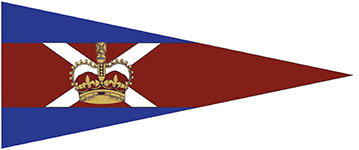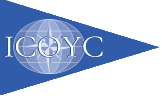History
The Beginnings
- In the spring of 1888, a notice appeared in the Montreal Gazette inviting people interested in sailing and racing to attend a meeting at the Montreal Amateur Athletic Association (MAAA) on the evening of April 7. At the meeting, 47 people signed up to be the first members of the new St. Lawrence Yacht Club.
- The new members, all Montreal businessmen, expressed the Club’s raison d’être as follows: Reflecting a love of boats, the challenge of wind and water and the urge for competition in one of the most fundamental modes of propulsion.
- Samuel Greenshields was appointed the Club’s first Commodore.
- By June 1 of that year, the St. Lawrence Yacht Club had 110 members.
- The Club held its first sailboat race on May 24, 1888, and its first steamboat race the following year.
- The Club did not have its own site for the first two years. Races were based at the Valois Bay Boat Club in the first year, and the Pointe Claire Boating Club in the second.
- Getting its own site was a priority for the new Club. The first piece of land was purchased circa 1890 for $1,875.00. The Club then expanded, purchasing additional land from the de Bellefeuille farm to the east in 1914. Located to the west, the J.P. Black property was purchased in 1919, doubling the size of the Club’s land. Mr. Black’s home became the ladies’ clubhouse. This building was demolished in 1960 to make way for the current clubhouse.
Royal Recognition
- On June 26, 1894, Queen Victoria gave the Club “Royal” recognition, and it became known as the Royal St. Lawrence Yacht Club. Seven other Canadian yacht clubs have the Royal designation.
- By 1894, the Club had 430 members.
- The Club inaugurated its tennis courts in the spring of 1895.
- In 1896, the RStLYC participated in the Seawanhaka Cup and were the first foreigners to defeat the U.S. on home waters, with Commodore Ross and crew Duggan and Shearwood sailing Glencairn to victory. This marked the start of the RStLYC’s golden age, as it built an international reputation.
Difficult Years and Optimism
- In the 20th century, events such as the Boer War, World War I, the Great Depression and World War II left their mark on the Club, impacting the membership and sailing competitions. However, strong management and resilience kept the Club afloat during these challenging times.
- Between 1914 and 1918, a total of one hundred and fifty members served and thirty died in the European slaughterhouse.
- Two War Memorial plaques can be seen in the Club’s lobby to honour our members who lost their lives in WWI and WWII.
- A few months after the 1919 Armistice, the Royal St. Lawrence Sea Scouts were created. It is believed to have been the first such troop in Canada.
- Thanks to visionary commodores and optimistic members, the summer of 1930 saw a storage shed built to bolster the new interest in dinghy racing. The Dinghy Dorm was built on the foundations of a house which had burnt down. The men’s clubhouse was expanded by adding an extension to the southeast end of the dining room.
- That year, the RStLYC also joined the North American Yachting Association and the newly formed Canadian Yachting Association.
After the War
- In 1947, a stone breakwater was built to cope with high water levels in the spring, and storms. Before the Seaway was built, flooding was common and piers were frequently washed away.
- In 1949, George S. Hamilton, who served as Commodore in 1936 and 1937, founded the Junior Squadron. By 1985, four thousand students had gone through the program
- In 1954, the Duke of Edinburgh extended his royal patronage to the Club and a pier was inaugurated in his name. Today, it is known as the Stephens pier. As Prince Philip, Duke of Edinburgh, has now passed away, the Club is awaiting the appointment of its next royal patron.
- In 1959, when Queen Elizabeth arrived to inaugurate the St. Lawrence Seaway, she reviewed the RStLYC fleet from her Royal Yacht Britannia.
The Sixties
- 1961 saw the inauguration of the new four-season clubhouse we know today, enabling year-round operations and facilities. The Club no longer needed to relocate for the winter, eliminating the headaches and planning involved in the moves. The new facilities allowed the Club to invite the Canadian Power Squadron to make it their home base for the winter, making it easier to offer courses.
- In 1965, Duggan House became the home base for the Junior Squadron. Built on the site of the 1897 men’s clubhouse, Duggan House was dedicated in memory of George Herrick Duggan, a founding member of the Royal St. Lawrence Yacht Club.
- 1967 was a very busy year for the Royal St. Lawrence Yacht Club as it hosted the Centennial Regattas. The following events took place under the Centennial Committee, chaired by Commodore Russel C. Scrim:
O.K. Dinghy World Championship from July 3 to 7, with 69 entries
Canadian International Lightning Championship from July 14 to 16, with 49 entries
The first world junior sailing championship from July 17 to 21, with 23 crews
Y-Flyers international championship from August 1 to 4, with 42 entries
Jolly Boat championship from August 14 to 18, with 33 entries
North American sailing championship for the Clifford D. Mallory cup, from August 28 to 31
1967 World Flying junior championship from September 4 to 8, with 55 entries
1967 World championship for Flying Dutchman class and 1967 World Open for Flying Dutchman, from September 9 to 16, with 115 entries
- 1967 was a banner year for the Club and there were a lot of positive comments on its outstanding hospitality and organization of all events.
More infrastructure improvements:
- In 1973, the Club purchased the large straddle lift carrier, allowing it to handle the bigger boats.
- In 1988, the clubhouse was expanded again, adding the Centennial dining room on the ground floor, and Mount Royal meeting room above it.
- In July 2005, WiFi became available at our Club.
- The famous green shed on the property’s east side was demolished in 2009 because it was no longer structurally sound.
Competition at the Royal
- In 1967, Ian Bruce and Don Bishop raced in England and returned with the coveted Prince of Wales trophy. Ian Bruce and Phil Evans repeated this feat in 1968.
- In 1969, Janet Bjorn became the club’s first woman champion and overall Club champion.
- From August 11 to 16, 1998, our Club hosted the Canadian Youth Sailing Championships with 265 participants and 206 boats. Under the expert guidance of Denise Bienvenu and Paul White, the event was a success, underlining our rich legacy of hosting major sailing events.
- In 2003, the Fédération de Voile du Québec (FVQ) awarded 6 prizes out of 10 to members of our Club for their achievements and contribution to the sailing community.
- On July 1, 2009, Ian Bruce received the Order of Canada and was recognized for his contribution to the Canadian sailing world. Ian had been a member of the Club since 1953.
- The Club started participating at the Olympics in 1952. Highlights include Evert Bastet’s silver medal at the 1984 Los Angeles Games, and Ian Bruce and Peter Bjorn’s 12th place at the 1972 Olympics in Kiel, West Germany. As of 2004, the Club had produced 27 Olympians.
Sailboat Designers
- From the very beginning, the Royal St. Lawrence Yacht Club has had a very strong history of boat designers: George H. Duggan and Fred Shearwood, in the Club’s early days, Alex Shearwood, Roger Hewson, Alex Poe, Leslie Thomson, Geoff Notman, Bob Dufour, Ian Bruce, Bruce Kirby, C.H. Routh and W. Taylor-Bailey.
- The team of Ian Bruce, Bruce Kirby and Hans Fogh produced the Laser design in 1970. Production began in 1972. Five years later, there were 22,000 Lasers on the water. The Laser is recognized as an international class sanctioned by the IYRU.
- Roger Hewson designed and built the Sabre 28, which debuted at the 1971 Newport Boat Show. 588 were built.



